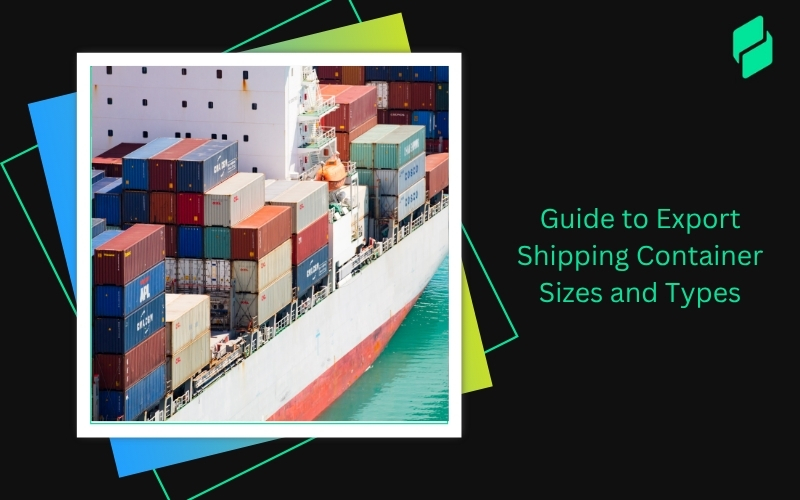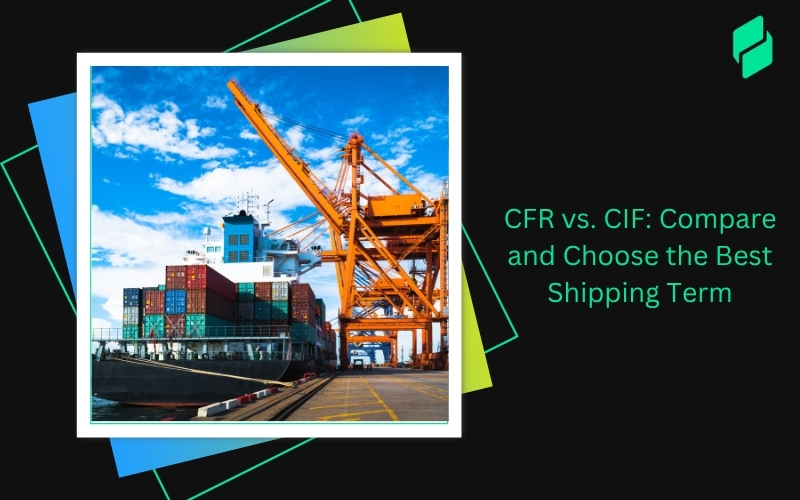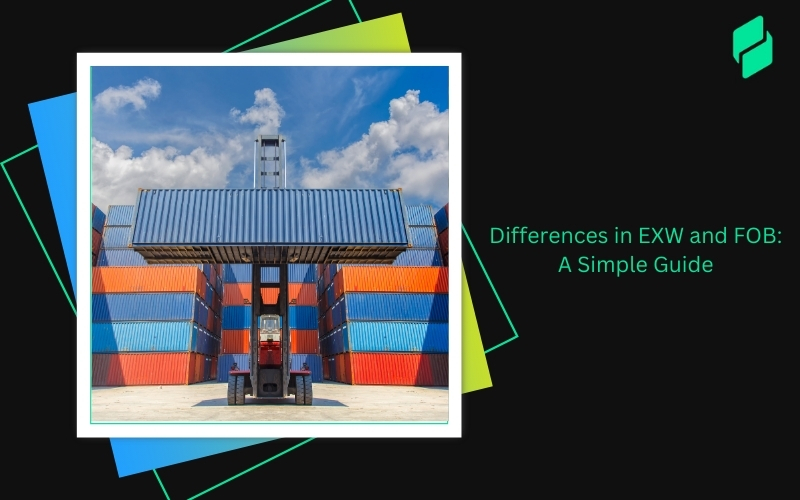Optimize your business: use unlimited savings with Pazago fulfilled now!
Get Started ->Understanding the design and planning of logistics networks is essential for businesses aiming to optimize their operations, reduce costs, and improve customer satisfaction. A well-structured logistics network allows for the efficient movement of goods, timely deliveries, and practical resource utilization, directly impacting overall business performance.
As supply chains become more complex, effective logistics network planning is essential for staying competitive and meeting customer demands. The global logistics industry is valued at over $11 trillion, underscoring its significance to the world economy. Efficient transportation route management, optimized warehouse operations, and inventory reduction contribute to cost savings and also help mitigate risks from disruptions.
This blog will cover the essential logistics network design and planning components, including strategic facility location, transportation planning, inventory management, and technology integration. We will look into how these elements contribute to a more efficient and cost-effective supply chain.
What is Logistics Network Design?

Logistics network design refers to strategically planning and structuring a company’s supply chain to ensure efficient movement of goods, services, and information. It involves determining the optimal locations for warehouses, distribution centers, and transportation hubs and choosing the best routes and methods for delivering products to customers.
Types of Logistics Network
Logistics networks are essential in the movement of goods from one place to another, and they can be designed in several ways based on the needs of the business or supply chain. Here are some of the common types of logistics networks:
- Point-to-Point Network: Goods are transported directly from the supplier to the customer, with minimal intermediaries. This type of network is efficient for short distances or when the quantity of goods is relatively small.
- Hub-and-Spoke Network: Goods are transported to a central hub, and from there, they are distributed to various destinations (spokes). This type of network is often used in air freight, where cargo is flown to a central airport (hub) and then distributed to other airports (spokes).
- Regional Network: Goods are distributed across a specific geographic region. This allows for quicker transportation and lower shipping costs compared to national or global networks. Regional warehouses and distribution centers are often used to facilitate this..
- Global Network: A global logistics network involves the movement of goods across different countries and continents. This network often requires multiple modes of transportation (e.g., sea, air, land) and a robust international infrastructure. Companies using a global logistics network may have warehouses and hubs in multiple countries.
- Centralized Network: Goods are stored in one central location or warehouse before being distributed to various customers. This is often used by companies that want to streamline operations and reduce inventory costs.
- Decentralized Network: Goods are stored in multiple warehouses or distribution centers closer to the customers. This setup reduces transportation costs and delivery times but increases inventory costs.
- Milk Run Network: This network involves a vehicle visiting multiple locations on a single trip to pick up or deliver goods. This system minimizes transportation costs by combining several deliveries or pickups into one route..
- Cross-Docking Network: Goods are unloaded from incoming shipments and immediately sent out without storage.
Understanding logistics network design is crucial as it lays the foundation for optimizing the flow of goods. Once the design is established, it's equally important to recognize these networks' role in the overall efficiency and success of business operations.
The Importance of Logistics Networks
Logistics networks are essential for efficient supply chain operations, ensuring timely deliveries, cost reduction, and high customer satisfaction. Key benefits include:
- Cost Efficiency
Optimizing routes and strategically placing facilities is key to reducing both transportation and warehousing costs. By selecting the most efficient routes, companies can minimize fuel expenses, reduce the number of vehicles needed, and avoid unnecessary delays. Additionally, strategically locating warehouses and distribution centers closer to key markets or suppliers can lower storage costs, streamline inventory management, and decrease transportation time.
- Improved Customer Service
A well-designed logistics network ensures that products are delivered faster and more reliably, directly enhancing customer satisfaction. Customers today expect quick and on-time deliveries, and meeting these expectations can significantly boost brand loyalty. Efficient networks reduce lead times and make it easier to track shipments, providing customers with more accurate delivery windows and updates.
- Flexibility
A dynamic logistics network is adaptable to fluctuations in demand, unexpected market changes, or disruptions. For instance, during seasonal peaks or unexpected surges in demand, a flexible network can scale up operations by using additional facilities or adjusting routes.
- Risk Mitigation
Logistics networks with diversified routes, multiple suppliers, and backup plans are better equipped to handle disruptions. For example, if one transportation route is closed due to an accident or severe weather, alternative routes or transportation methods can be used to minimize delays. By using multiple distribution centers or having emergency stock reserves, businesses can ensure they are not overly reliant on a single supply chain partner or route.
- Operational Efficiency
Efficiency in logistics operations reduces delays and bottlenecks, improving the overall performance of the supply chain. This involves optimizing inventory levels, improving warehouse processes, and using advanced technology to track shipments and manage resources.
- Sustainability
Optimizing logistics networks can significantly reduce the environmental impact of transportation. Shorter transportation distances, improved route planning, and consolidated shipments all reduce fuel consumption and lower emissions. Moreover, by using energy-efficient vehicles, alternative fuels, or sustainable packaging, companies can further minimize their carbon footprint..
Once you understand the fundamentals of logistics network design, it’s crucial to understand the key elements that make up an effective and efficient network, ensuring optimal performance.
Interesting Read: How Logistics Operations and Supply Chain Works
Key Elements in Planning a Logistics Network

Planning an effective logistics network involves optimizing key elements that drive efficiency, reduce costs, and ensure timely deliveries. Here are the crucial factors to consider:
- Strategic Facility Placement
Locating warehouses, distribution centers, and manufacturing facilities is critical to minimizing transportation costs and reducing lead times. Location choices should balance proximity to suppliers, customers, and transportation hubs.
- Optimizing Transportation Networks
Selecting the most cost-effective transportation modes and optimizing routes is essential for reducing delivery costs and improving efficiency. Multi-modal transportation can offer flexibility in balancing cost and delivery speed.
- Demand Forecasting & Supply Chain Coordination
Accurate demand forecasting aligns inventory with market needs, helping to avoid overstocking or stockouts. Coordinating this with supply chain operations ensures timely product availability and efficient network performance.
- Technology Integration
Implementing systems like TMS, WMS, and ERP enhances visibility, real-time tracking, and automated processes, which make operations more efficient and improve customer service.
- Scalability and Flexibility
A logistics network should be designed to scale as the business grows and adapt to changes in market conditions. Flexibility allows the network to respond to disruptions or fluctuations in demand without significant inefficiencies.
- Sustainability Practices
Sustainable logistics practices, such as optimizing transportation routes and using energy-efficient warehouses, reduce environmental impact and can improve a company’s brand reputation.
- Cost Efficiency vs. Service Levels
Balancing cost savings with the need for reliable and fast delivery is essential. A well-designed network ensures that cost-cutting efforts don’t sacrifice service quality.
- Risk Management and Resilience
Building resilience into the network by planning for potential disruptions ensures continuity. This includes having backup suppliers, alternative routes, and flexible facilities to handle unexpected challenges.
Once the key elements in planning a logistics network are established, the next step is to proceed with a structured approach to designing a network that effectively supports these foundational components.
Steps to Design a Logistics Network

Designing a logistics network is crucial for companies seeking to optimize their supply chain operations. An effective logistics network design ensures that products are delivered to customers efficiently, cost-effectively, and on time. Here are the key steps involved in designing a logistics network:
- Define Business Objectives
To begin, it’s essential to understand the strategic objectives your logistics network must support.
- Goals: Identify business objectives such as minimizing costs, improving customer service, or increasing flexibility.
- KPIs: Establish key performance indicators (KPIs) to guide the design, such as delivery speed, cost per unit, and customer satisfaction.
- Assess Current Network
With objectives set, the next step is to assess the current logistics network to understand its strengths and weaknesses.
- Review Existing Infrastructure: Analyze your current logistics network, including distribution centers (DCs), warehouses, transportation routes, and third-party logistics (3PL) providers.
- Data Gathering: Collect data on demand patterns, customer locations, transportation costs, inventory levels, and lead times.
- Demand Analysis and Forecasting
Now that you’ve evaluated the current state, understanding future demand is crucial for designing an efficient network.
- Demand Segmentation: Segment demand based on geography, customer types, and product categories.
- Forecasting: Use historical data to predict future demand and anticipate surges or seasonality.
- Service Levels: Define service level requirements (e.g., same-day, next-day delivery).
- Network Design Options
The next step is to explore various network configurations that can meet those demands efficiently.
- Facility Location: Determine optimal warehouse and distribution center locations using analysis tools.
- Facility Sizing: Size facilities based on forecasted demand and storage needs.
- Transportation: Choose transportation strategies, modes, and distribution approaches (e.g., hub-and-spoke).
- Inventory Management: Set inventory levels to balance stock availability and minimize holding costs.
- Cost Analysis
A thorough cost analysis is essential to ensure the network is economically viable.
- Cost Components: Identify fixed, variable, and operational costs.
- Optimization: Use tools like Total Landed Cost or Activity-Based Costing to evaluate network design efficiency.
- Scenario Analysis: Test different scenarios (e.g., more DCs vs. fewer DCs) to find the most cost-effective option.
- Technology and Automation
Now, you must explore how technology and automation can optimize your network.
- Warehouse Management System (WMS): Implement WMS to optimize inventory management, order picking, and shipping operations.
- Transportation Management System (TMS): A TMS helps manage transportation routes, carrier selection, and freight cost optimization.
- Automation: Explore options for automation in warehouses, such as robotics, automated guided vehicles (AGVs), or conveyor systems, to improve efficiency and reduce labor costs.
- Supplier and Vendor Integration
Integrating your suppliers and vendors into the network design ensures efficient operations.
- Supplier Collaboration: Integrate suppliers using systems like EDI for effortless order and shipping coordination.
- 3PL Integration: Consider using third-party logistics providers for warehousing and transportation, especially in new regions.
- Simulate and Model the Network
Before finalizing the design, simulating various scenarios will help ensure the network performs as expected under different conditions.
- Network Simulation: Use software to model network scenarios and assess impacts on costs and service levels.
- Scenario Testing: Simulate different conditions and changes to identify the optimal design.
- Implementation Plan
With a refined design, the next step is implementing the network and making it operational.
- Action Plan: Develop a roadmap for implementing the network, including timelines and milestones.
- Pilot Testing: Conduct small-scale tests to identify potential issues before full implementation.
- Change Management: Ensure effective communication and training for employees, customers, and suppliers.
- Monitoring and Continuous Improvement
Once implemented, ongoing monitoring and continuous improvement are essential to maintaining an effective logistics network.
- Performance Tracking: Continuously monitor the performance of the logistics network based on the defined KPIs.
- Feedback Loops: Establish feedback mechanisms to identify areas for further optimization or refinement in the network
- Adaptation: Adjust the logistics network based on changes in demand, market conditions, or business goals.
Building on the foundational steps of logistics network design, advanced methods can now be applied to refine and optimize the network, driving greater efficiency and performance.
Also Read: 4 Strategies to Ensure Success in Logistics Optimization
Advanced Methods to Optimize Logistics Network Design

Optimizing a logistics network is a complex and dynamic process that requires advanced techniques to ensure efficiency, cost-effectiveness, and adaptability to market changes. Below are the key advanced methods used to optimize logistics network design:
- Mathematical Optimization Models: Linear Programming (LP) and Mixed-Integer Programming (MIP) help allocate resources like transportation routes and warehouse capacities while minimizing costs and meeting constraints.
- Heuristic and Metaheuristic Approaches: Techniques like Genetic Algorithms (GA), Simulated Annealing (SA), and Tabu Search are used to solve complex logistics problems by efficiently exploring large solution spaces.
- Network Flow Optimization: Transportation Network Flow models optimize the movement of goods, while Multi-Commodity Flow Problems (MCFP) handle multiple products with varying costs and demands.
- Geographical Information Systems (GIS): GIS tools help optimize facility locations and evaluate geographic factors.
- Supply Chain Simulation: Discrete Event Simulation (DES) and Monte Carlo Simulation allow testing various scenarios to evaluate logistics performance and anticipate disruptions.
- AI and Machine Learning: Predictive Analytics and Reinforcement Learning help forecast demand, optimize inventory, and adjust logistics strategies dynamically using AI-based algorithms.
- Cloud-Based Platforms: Cloud-based optimization tools offer real-time data sharing, enhanced collaboration, and dynamic logistics network adjustments, improving flexibility and reducing costs.
- Blockchain: Blockchain ensures transparency and accountability in the logistics network, using smart contracts to automate transactions and optimize processes.
While advanced methods can significantly enhance the efficiency and flexibility of a logistics network, their successful implementation is often hindered by a range of challenges that must be carefully managed to achieve optimal results.
Also Read: Top 10 Logistics Management Software
Challenges in Logistics Network Design

Designing a logistics network comes with several challenges that can impact its efficiency, cost-effectiveness, and ability to meet customer demands. Below are some of the key challenges faced in logistics network design:
- Demand Variability
Demand patterns often fluctuate due to seasonality, market trends, or unexpected changes in customer behavior. This makes it difficult for companies to forecast future demand accurately, which can lead to overstocking or stockouts. Designing a logistics network that can adapt to these variations without incurring high costs requires flexibility and sophisticated forecasting models.
- Transportation Costs and Capacity
Transportation is typically one of the largest expenses in logistics, and fluctuating fuel prices, carrier capacity limitations, and rising fuel costs can significantly impact the efficiency of a network. Managing transportation costs requires optimizing routes, balancing modes of transport, and strategically planning fleet usage to minimize expenses and avoid service disruptions.
- Facility Location Decisions
The location of warehouses, distribution centers, and manufacturing plants is a critical decision in logistics network design. Poor facility placement can increase transportation costs, lead to longer delivery times, and affect overall service levels. Balancing factors like proximity to suppliers, customers, transportation infrastructure, and local labor costs requires a thorough analysis to find the most cost-effective and efficient locations.
- Inventory Management
Balancing inventory across multiple facilities while considering demand variability, lead times, and storage costs is a major challenge. Overstocking can lead to high holding costs, while stockouts can harm customer satisfaction. Optimizing inventory requires sophisticated tools for demand forecasting, inventory replenishment, and strategic stock placement to ensure that the right products are available in the right locations at the right time.
- Supply Chain Risk and Disruptions
Logistics networks are vulnerable to various risks, such as natural disasters, labor strikes, and geopolitical instability, which can disrupt the flow of goods. These disruptions can delay shipments, increase costs, and affect customer service levels. Building resilience into the logistics network by developing contingency plans, diversifying suppliers, and employing risk management strategies is essential for minimizing the impact of these unforeseen events.
Given the complexities and challenges involved in logistics network design, utilizing tools like Pazago can provide a practical solution, simplifying the process and helping businesses navigate these hurdles more efficiently.
Also Read: Benefits and Features of Cloud-Based Logistics Software
Simplify Logistics Network Design with Pazago

Pazago’s solutions are crafted to simplify and optimize every aspect of your logistics network. From route planning to compliance management, we help ensure your operations run safely and efficiently.
- End-to-End Logistics Management: Reliable, fast shipping solutions with optimized routes that ensure easy movement of goods from origin to destination, minimizing delays and improving delivery timelines.
- Centralized Document Management: A secure, searchable digital platform integrated with your logistics workflows, reducing errors and ensuring compliance with international regulations for better network operations.
- 24/7 Real-Time Shipment Tracking: Receive live updates and alerts for network disruptions, performance issues, and critical milestones, enabling proactive decision-making and swift resolution of any challenges.
- Efficient Communication: A unified platform that enhances coordination with all supply chain partners, allowing quick issue resolution, easy communication, and faster decision-making.
- Integrated Quality Inspections: Manage inspections directly from the platform, ensuring compliance with global standards for faster approvals and enhanced product quality.
- Comprehensive Cargo Insurance: Digital management of insurance policies to ensure protection against disruptions such as delays, damages, or regulatory issues, safeguarding your network from potential risks.
- Financial Simplification: Simplified cross-border payments, currency risk management, and financing options for large shipments, enabling easy financial transactions.
Wrapping Up
As regulations tighten and competition intensifies, traditional logistics methods are turning increasingly inefficient. Adopting innovative tools and strategies is essential for enhancing efficiency, cutting costs, and ensuring compliance with global standards.
For businesses designing logistics networks, staying ahead of industry trends is critical to meeting global expectations and customer demands. Modernizing your processes can help reduce waste, optimize routes, and boost overall performance. Don't let outdated systems hold you back. Small, strategic changes can lead to significant improvements in the effectiveness of your logistics network.
Ready to optimize your logistics network and take your business to the next level? Schedule a demo today to see how easy it can be to enhance your supply chain.


.png)








